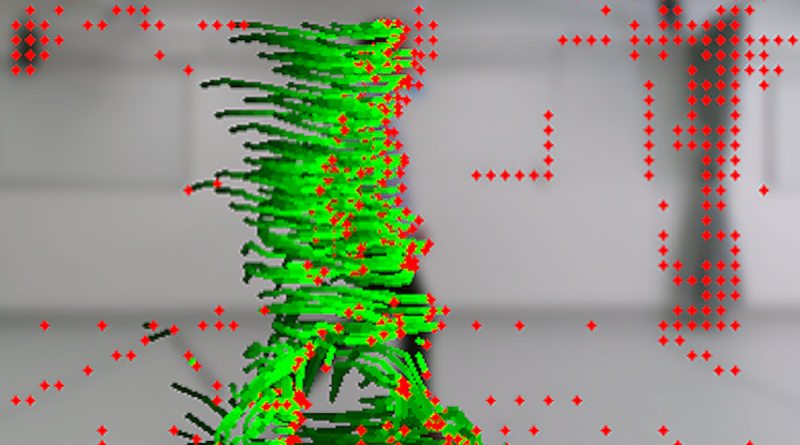Great strides in gait recognition

Defence scientists are exploring how individual walking styles may help in personal identification.
CAPTION: Motion detection and tracking of a person in video sequence using optical flow.
For decades, automated facial recognition systems have been used by law enforcement agencies to identify persons of interest. However, these systems are not without their limitations. Low lighting, poor picture resolution, facial coverings, and facial expressions can impede performance.
Scientists are now exploring how the characteristics of an individual’s gait could help in establishing a person’s identity.
Working with researchers from the University of Adelaide and Swordfish Computing, Defence scientists Sau Yee Yiu and Gary Hanly are part of a team analysing different methods for capturing gait data.
Typically the focus has been on obtaining optical flow data and skeletal tracking data using a video camera or motion-sensing technology, however the team has also examined a method which uses ground-based pressure pads to measure the various forces at play when walking.
Ms Yiu said gait recognition had advantages over facial recognition.
“Gait has the benefit of being plainly visible, perceivable at a distance and is something that can be captured non-invasively,” Ms Yiu said.
“The purpose of our research is to demonstrate that different gait features can be extracted from a person and used to accurately identify them.”
The use of gait recognition has been used in hospital settings to monitor the elderly and in sports science.
While the research by Ms Yiu and her team shows that gait recognition does have the potential to replace facial recognition in certain conditions, there are limitations.
An individual may change their gait when walking in a crowded space, for example. Even the health of the individual, their clothing and camera-viewing angles can change or obscure the walking pattern of a person and so affect recognition accuracy. There is also “gait spoofing” where an individual may intentionally alter their gait.
Future research is planned to address these limitations, including improvements to algorithms, which will enable gait features to be extracted from multiple people in a scene.
Despite its constraints, gait recognition is a useful tool in the identification toolkit.
“Using it in conjunction with face or other biometrics, or just by including other descriptors of a person such as their height, age and gender could certainly improve the identification performance,” Ms Yiu said.
.
.

.
.






They should be using this technology to assess the gait of recruits and use the data to correct any abnormalities in gait or muscular skeletal system when walking or running in order to mitigate injury caused by prolonged incorrect technique. Imagine what could be found, and corrected or managed espesially in RAInf soldiers.